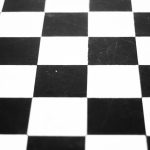Description
3D printing, also known as additive manufacturing, has revolutionized the way products are designed and manufactured. This innovative technology allows for the creation of three-dimensional objects from digital files by layering materials, such as plastics, metals, and even biological substances. The process begins with a computer-aided design (CAD) model, which is sliced into thin horizontal layers by specialized software.
The printer then deposits material layer by layer, gradually building up the final object. This method contrasts sharply with traditional subtractive manufacturing techniques, which often involve cutting away material from a solid block to achieve the desired shape. The origins of 3D printing date back to the early 1980s when Charles Hull invented stereolithography, the first 3D printing technology.
Since then, the field has expanded dramatically, with numerous techniques emerging, including fused deposition modeling (FDM), selective laser sintering (SLS), and digital light processing (DLP). Each of these methods has its unique advantages and applications, contributing to the growing versatility of 3D printing. As the technology has matured, it has found its way into various sectors, from aerospace and automotive to healthcare and consumer goods, fundamentally altering how products are conceived, developed, and produced.
Key Takeaways
- 3D printing is a manufacturing process that creates a physical object from a digital design by layering materials such as plastic, metal, or ceramics.
- Current applications of 3D printing include prototyping, custom medical implants, aerospace components, and architectural models.
- Advancements in 3D printing technology include faster printing speeds, improved material options, and the ability to print larger and more complex objects.
- 3D printing has had a significant impact on industries such as healthcare, automotive, and fashion by enabling rapid prototyping, customization, and cost-effective production.
- Challenges and limitations of 3D printing include limited material options, slow production speeds for large-scale manufacturing, and the need for skilled operators.
- Future trends in 3D printing include the development of new materials, increased use of 3D printing in mass production, and the integration of 3D printing with other technologies such as artificial intelligence and robotics.
Current Applications of 3D Printing
Medical Breakthroughs
In the medical field, 3D printing is being used to create custom prosthetics and implants tailored to individual patients. This personalization not only enhances comfort but also improves functionality. Surgeons are increasingly utilizing 3D-printed anatomical models derived from patient scans to plan complex surgeries with greater precision.
Aerospace Advancements
In the realm of aerospace, companies like Boeing and Airbus are leveraging 3D printing to manufacture lightweight components that reduce fuel consumption and improve overall efficiency. The ability to produce intricate geometries that would be impossible or prohibitively expensive with traditional manufacturing methods allows for significant weight savings. Boeing has incorporated 3D-printed parts in its 787 Dreamliner, showcasing how this technology can lead to both cost savings and enhanced performance.
Advancements in 3D Printing Technology

The landscape of 3D printing technology is continuously evolving, driven by advancements in materials science, software development, and hardware capabilities. One notable trend is the development of new materials that expand the range of applications for 3D printing. For instance, researchers have been working on bio-inks that can be used in bioprinting to create living tissues and organs.
This could potentially revolutionize organ transplantation by providing a means to produce organs on demand, tailored to the recipient’s biological makeup. Moreover, improvements in printer technology have led to faster print speeds and higher resolutions. The introduction of multi-material printers allows for the simultaneous use of different materials in a single print job, enabling the creation of complex objects with varying properties.
For example, a multi-material printer can produce a single object that combines rigid and flexible components, which is particularly useful in industries like consumer electronics where devices often require both durability and flexibility. Additionally, advancements in artificial intelligence and machine learning are being integrated into 3D printing processes to optimize designs and improve print quality by predicting potential failures before they occur.
Impact of 3D Printing on Industries
| Industry | Impact of 3D Printing |
|---|---|
| Automotive | Reduced lead times for prototyping and production of parts |
| Healthcare | Customized medical implants and prosthetics |
| Aerospace | Lightweight and complex parts production |
| Manufacturing | On-demand production of spare parts and tooling |
| Fashion | Customized and unique designs for accessories and clothing |
The impact of 3D printing on various industries is profound and multifaceted. In manufacturing, it has introduced a paradigm shift towards more decentralized production models. Companies can now produce parts on-demand at local facilities rather than relying on centralized factories.
For instance, companies like Adidas have begun using 3D printing to create customized footwear that meets individual customer preferences while reducing excess inventory. In the construction industry, 3D printing is being explored as a means to address housing shortages and reduce construction costs.
Projects like ICON’s 3D-printed homes demonstrate how entire structures can be built using large-scale printers that extrude concrete-like materials. This method not only speeds up construction times but also allows for innovative architectural designs that would be difficult to achieve with traditional building methods. Furthermore, the ability to print structures on-site can significantly reduce labor costs and material waste.
Challenges and Limitations of 3D Printing
Despite its many advantages, 3D printing faces several challenges and limitations that hinder its widespread adoption across all sectors. One significant issue is the regulatory landscape surrounding the technology, particularly in industries like healthcare and aerospace where safety standards are paramount. The lack of established guidelines for certifying 3D-printed parts can create hesitance among manufacturers to fully embrace this technology.
For example, while some medical devices have been successfully approved for use, others remain in regulatory limbo due to uncertainties about their safety and efficacy. Another challenge lies in the material limitations inherent in current 3D printing technologies. While there has been significant progress in developing new materials, many printers are still restricted to a limited range of substances that may not meet the performance requirements for certain applications.
For instance, while plastics are widely used in consumer products, industries requiring high-strength metals or specialized composites may find existing 3D printing solutions inadequate. Additionally, issues related to surface finish and mechanical properties can arise from the layer-by-layer construction process, necessitating post-processing steps that can add time and cost to production.
Future Trends in 3D Printing

Automation and Robotics: Enhancing Efficiency and Quality
One prominent trend is the increasing integration of automation and robotics into the 3D printing process. Automated systems can enhance production efficiency by reducing human intervention in repetitive tasks while ensuring consistent quality control throughout the manufacturing process. This shift towards automation could lead to more scalable production capabilities that meet growing demand across various sectors.
Sustainable Practices: Minimizing Waste and Energy Consumption
Another significant trend is the rise of sustainable practices within the 3D printing industry. As environmental concerns become more pressing, there is a growing emphasis on developing eco-friendly materials and processes that minimize waste and energy consumption. Companies are exploring biodegradable filaments made from renewable resources as alternatives to traditional plastics. Additionally, initiatives aimed at recycling used materials into new filament for 3D printers are gaining traction, promoting a circular economy within the industry.
Digital Technologies: Enhancing Supply Chain Transparency and Security
Furthermore, advancements in digital technologies such as blockchain could play a crucial role in enhancing supply chain transparency and security in 3D printing applications. By providing a decentralized ledger for tracking the provenance of materials and parts, blockchain can help ensure compliance with regulatory standards while fostering trust among stakeholders in industries like aerospace and healthcare. As these trends continue to evolve, they will undoubtedly influence how businesses approach design and manufacturing processes in an increasingly competitive landscape. The potential for innovation within 3D printing remains vast, promising exciting developments that could redefine traditional manufacturing paradigms across multiple sectors.
If you’re interested in mobile gaming, you may want to check out the article on com/index.php/2019/11/14/bubble-words-juego-de-conectar-letras/’>Bubble Words: Juego de Conectar Letras for a fun and challenging experience. And for those who use WhatsApp frequently, the article on WhatsApp Messenger 1.3 provides some useful information on this messaging app.
FAQs
What is a 3D result?
A 3D result refers to the outcome of a 3D lottery game, where players choose a three-digit number and win prizes based on matching the drawn numbers.
How is a 3D result determined?
A 3D result is determined by drawing three numbers from 0 to 9, and players win prizes based on matching the drawn numbers in the exact order or any order.
Where can I find the 3D result today?
You can find the 3D result today by checking the official website of the lottery company, visiting authorized lottery outlets, or checking local newspapers for the published results.
What are the prizes for the 3D result today?
The prizes for the 3D result today vary depending on the lottery company and the specific game rules, but typically include different prize tiers for matching numbers in different orders.
How often are 3D results drawn?
3D results are typically drawn daily, with some lottery companies offering multiple draws per day to give players more chances to win.





